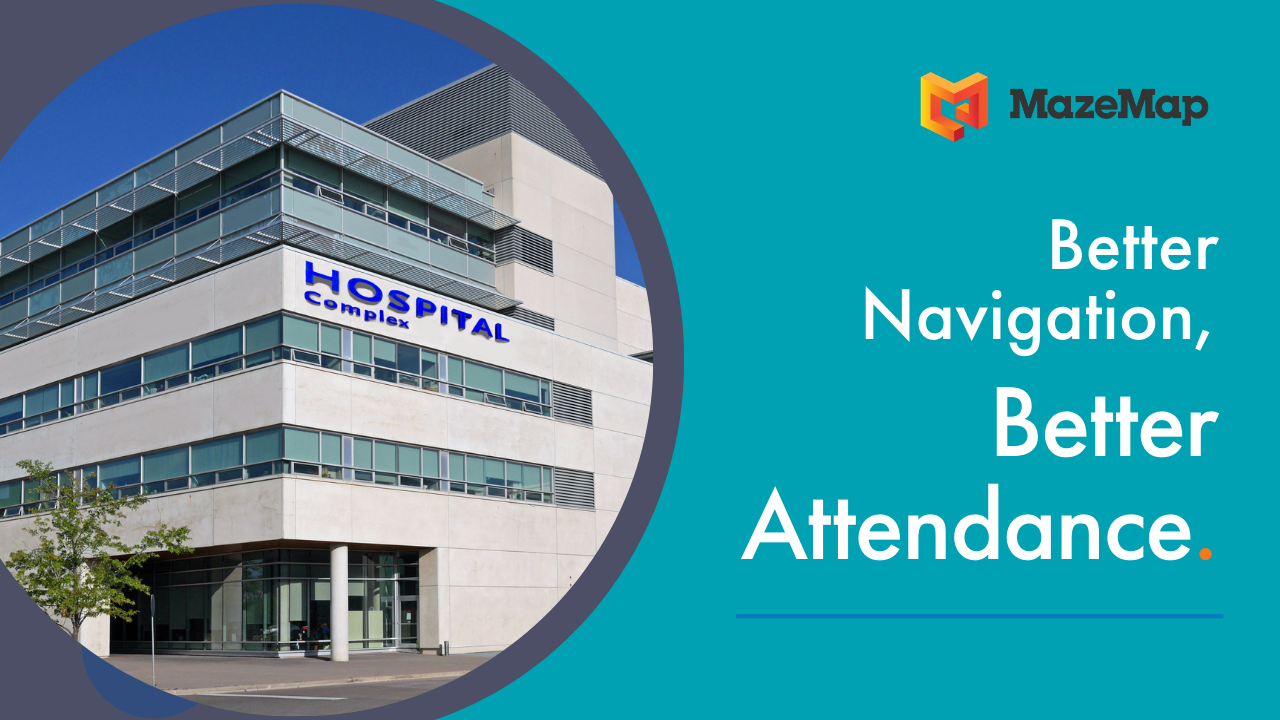BY STEINAR MORLAND
Asset tracking at hospitals is a question that we get more and more from our customers, and it is indeed a very strong use case for indoor positioning technology. The idea of tagging different machinery, staff and patients to ensure more efficient operations and less waste of resources in hospitals is very interesting, and something we are putting in a lot of efforts on together with partners and customers at the moment. In this post, we will be looking at important aspects you should assess if considering an asset tracking system.

*Illustration showing asset tracking on interactive indoor maps at a hospital.
Copyright: [MazeMap](https://www.mazemap.com)*
Hospitals tend to lose a certain amount of their wheelchairs and beds each year, and it can be very hard to keep track of where all mobile equipment is located at all times. Indoor positioning technology can solve these issues, while also enabling other existing services to become more efficient. Alarm systems can for instance be made more efficient if it is always the closest person with a certain competence that answers patient alarm. This person could then utilize good indoor maps to get the shortest path with live navigation to where the alarm is set off.
“Indoor positioning technology can solve the asset tracking issues at hospitals”
With its clear technological advantages, more and more people become convinced that indoor positioning technology can solve important issues in the health sector. What are the important aspects to consider if you are interested in the opportunities of an asset tracking system and indoor navigation services?
1. What core elements do you need?
There are at least two components to an asset tracking solution at a hospital. One, you need indoor positioning technology enabled on site to actually receive positional information on what you want to keep track of. Two, you need an indoor map system to illustrate and present the positional data in a format that fit your needs.
It can be a tough decision to figure out what IPS provider would fit your needs best. It will depend on what level of accuracy you need, the budget available, and the use case you will be using the system for. In all cases, you need to select providers that can integrate with each other on making a great end user system for your hospital.
It’s a bit easier to choose a provider of indoor maps, as the same functionality is important for all use cases. The indoor map system need to be able to present positioning data from multiple sources and from different providers in a clear and user-friendly manner. It needs to be able to search different machinery and rooms, and provide directions for how to find both mobile assets and rooms.
2. What is your use case?
This is probably the most important question to consider, because it will determine which IPS provider is best suited for your asset tracking needs. What are you going to track? Is it people, machinery or other assets? How mobile are these assets? What level of accuracy do you need for positioning of these assets, and how long latency is acceptable? These are all questions you should think about and assess thoroughly before making a decision.
We are more than happy to engage in a conversation on what providers you should consider given the needs you have, and happy to set up the contact. If you do wish to engage in such a discussion, please be in touch
3. What synergies would you want to achieve?
This third question is also of vital importance, as it relates to what systems that could give you the complete experience you are looking for. You should always expect more than just a core feature from indoor positioning systems, because it represents a fantastic piece of infrastructure that can enhance so many services at a hospital.
“IPS is fantastic infrastructure that can enhance so many services at a hospital”
For instance, when you first have established indoor maps and positioning services, why not enable a wayfinding service? You could send out links to patients prior to their appointments, and provide them with turn by turn directions of how to get to their examination rooms. You could have self-service check-in kiosks that prints out maps for how to get to their appointments, or digital QR codes that would give them turn-by-turn navigation all the way. With indoor positioning, you could even have audio guidance for blind people to navigate the hospital campus.

*Self-service kiosks for wayfinding at hospitals.
Copyright: [MazeMap](https://www.mazemap.com)*
Likewise, with indoor maps and positioning, you could enhance meeting booking tools, web pages, alarm systems, facility management systems and an array of other services. That’s why you should always assess what possibilities you have for achieving synergies when considering an asset tracking system.
What aspects of asset tracking systems do you think it’s worth considering thoroughly before making a decision?
What possibilities do you see in asset tracking systems enabling other hospital services?
Tweet us @MazeMap for good ideas!
Please do get in touch with us directly if you want to dive further into what possibilities we have for asset tracking at your hospital!











